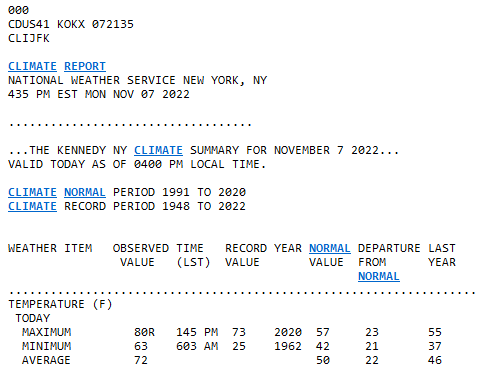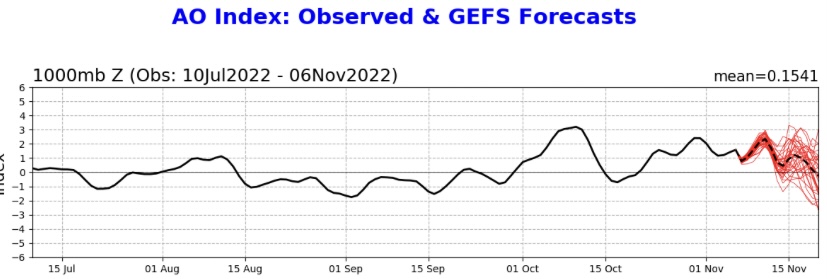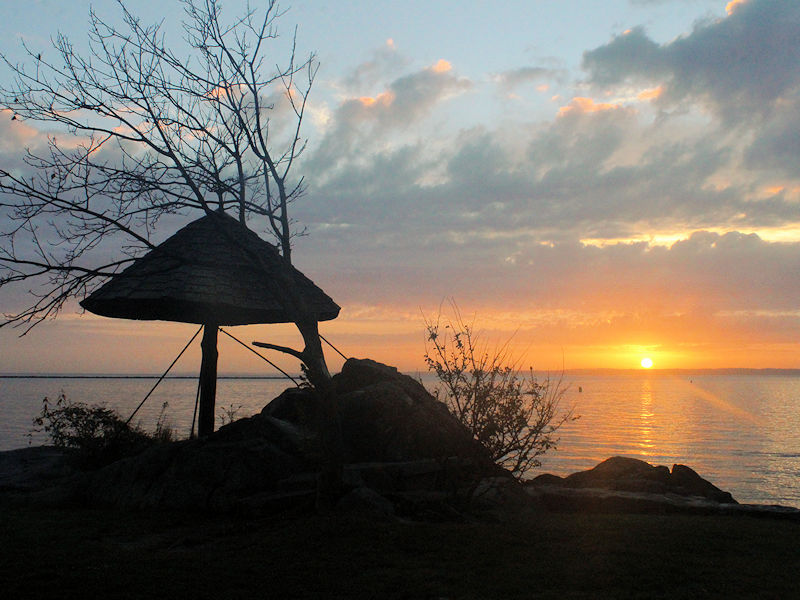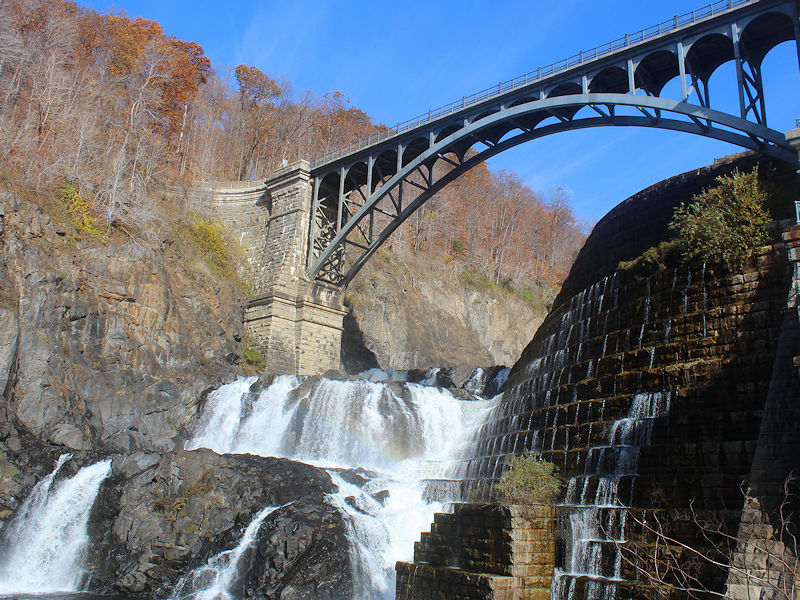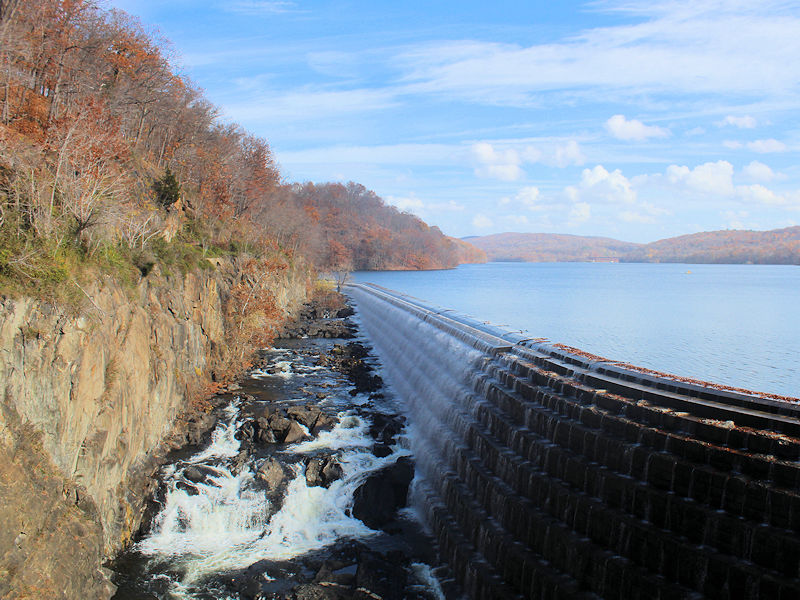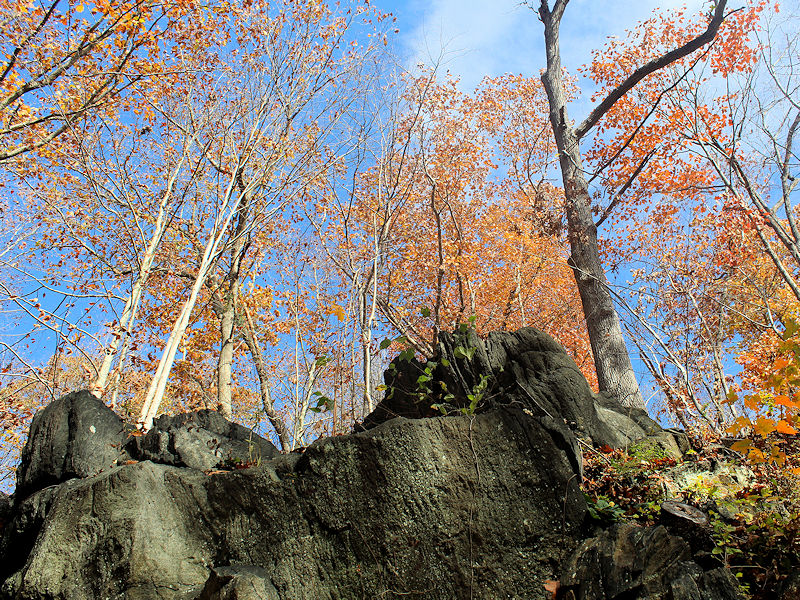-
Posts
22,983 -
Joined
Content Type
Profiles
Blogs
Forums
American Weather
Media Demo
Store
Gallery
Everything posted by donsutherland1
-
Error fixed.
-
Ten years ago the high temperature at JFK Airport was 41°, as a snowstorm moved in. Today, summerlike warmth prevailed as the thermometer topped out at 80°. Today's daily records included: Athens, GA: 85° (old record: 84°, 2017) Atlanta: 83° (old record: 79°, 2005 and 2017) Atlantic City: 81° (old record: 77°, 2020) Baltimore: 81° (old record: 77°, 1938, 1975, and 2020) Bangor: 73° (old record: 71°, 2020) Bridgeport: 79° (old record: 69°, 2020) ***New November Record*** Caribou: 64° (old record: 63°, 1948) Houlton, ME: 67° (old record: 66°, 1948 and 1975) Islip: 80° (old record: 74°, 2020) ***New November Record*** Lynchburg: 84° (old record: 77°, 1965) New Haven: 80° (old record: 69°, 2020) ***New November Record*** New Orleans: 90° (old record: 86°, 1986) ***New November Record; Latest 90° temperature on record*** New York City-JFK: 80° (old record: 73°, 2020) New York City-LGA: 78° (old record: 76°, 2020) Newark: 81° (old record: 78°, 1938) Philadelphia: 79° (old record: 76°, 1938) Poughkeepsie: 75° (tied record set in 2020) Providence: 79° (old record: 76°, 2020) Raleigh: 84° (old record: 80°, 2008) Richmond: 82° (old record: 81°, 1975) Sterling, VA: 79° (old record: 76°, 2020) Tallahassee: 88° (old record: 86°, 2003 and 2015) Trenton: 76° (tied record set in 1975) Washington, DC: 81° (old record: 77°, 1938 and 1975) Westhampton: 80° (old record: 70°, 2020) ***New November Record*** White Plains: 75° (old record: 73°, 2020) Wilmington, DE: 80° (old record: 75°, 1938, 1975, and 2020) Boston, Bridgeport, Islip, New Haven, New York City (JFK, LGA, NYC), Newark, and Philadelphia all experienced their warmest first week of November on record. The final numbers will be available after midnight, as cooler air is now pressing into the region. Tomorrow and Wednesday will see temperatures no higher than the 50s in most of the region. Afterward, the temperature will again rebound before another stronger cold front brings cooler than normal conditions for late in the weekend and early next week. The cold front could be preceded by a significant rain and wind event, in part due to the remnants of Nicole. The potential exists for a widespread significant rainfall Friday through Saturday. Beyond mid-month, there are emerging signals that Atlantic blocking could try to develop. There is now good agreement between the latest ensembles and the statistical guidance following strong polar vortexes at the end of October showing the AO going negative toward November 20th +/- a few days. The ENSO Region 1+2 anomaly was -1.8°C and the Region 3.4 anomaly was -1.1°C for the week centered around November 2. For the past six weeks, the ENSO Region 1+2 anomaly has averaged -1.71°C and the ENSO Region 3.4 anomaly has averaged -0.90°C. La Niña conditions will likely persist into the winter. The SOI was -31.05 today. The previous record low was -21.59, which was set in 1997. The preliminary Arctic Oscillation (AO) was +0.739 today. On November 5 the MJO was in Phase 8 at an amplitude of 1.827 (RMM). The November 4-adjusted amplitude was 1.725 (RMM). Based on sensitivity analysis applied to the latest guidance, there is an implied 76% probability that New York City will have a warmer than normal November (1991-2020 normal). November will likely finish with a mean temperature near 50.5° (2.5° above normal).
-
-
11/1/1950. There’s still a chance that it hit 80 within the last 15 minutes. We’ll see later.
-
JFK was also 77. Latest was November 1, 1950 (80).
-
It’s also hotter for the Connecticut shore. Bridgeport (79) and New Haven (80) have set monthly records.
-
It was 77 at Islip on 11/15/1993.
-
So far, 79 is the high at JFK.
-
Areas that have hit 80 or above include: Atlantic City: 81 Islip: 80 New Haven: 80 Newark: 81
-
It hit 80.
-
On the final day of extreme November warmth, Bridgeport and Islip have tied their daily records and New Haven has broken its daily record as of 10 am.
-
For now, I’m thinking Central Park will get to 34.
-
It’s a close call for Central Park and LaGuardia. Most of the region should see 32 or below.
-
Morning thoughts… It will become mostly sunny and very warm. High temperatures will reach the middle and upper 70s in most of the region. Likely high temperatures around the region include: New York City (Central Park): 75° Newark: 78° Philadelphia: 78° Tomorrow and Wednesday will be noticeably cooler days with temperatures remaining in the 50s in much of the region. Normals: New York City: 30-Year: 56.9°; 15-Year: 56.9° Newark: 30-Year: 58.0°; 15-Year: 58.3° Philadelphia: 30-Year: 59.0°; 15-Year: 58.9°
-
Today was another day of incredible warmth for November. Records tumbled in many parts of the Northeast. Records included: Binghamton: 71° (old record: 70°, 1978 and 1950) Boston: 76° (old record: 73°, 1938, 1948, 1959, and 2015) Bridgeport: 72° (old record: 71°, 2015) Buffalo: 74° (old record: 73°, 1948 and 1956) Burlington: 76° (old record: 75°, 1948) Caribou: 71° (old record: 66°, 2020) ***First November with 2 70° days*** Concord: 75° (tied record set in 1948) Hartford: 76° (tied record set in 2015) Houlton, ME: 71° (old record: 69°, 1938) Islip: 74° (old record: 69°, 2015) Manchester, NH: 77° (old record: 75°, 2015) Millinocket, ME: 71° (old record: 68°, 1938) New Haven: 74° (old record: 69°, 1948, 1959, and 2015) New York City-LGA: 75° (tied record set in 2015) New York City-NYC: 75° (old record: 74°, 1948 and 2015) Providence: 75° (old record: 72°, 1948, 1959, 1994, 2015, and 2020) Richmond: 82° (old record: 81°, 1975) Rochester: 72° (tied record set in 1948 and tied in 2005 and 2015) Syracuse: 80° (old record: 74°, 2005) White Plains: 74° (old record: 72°, 2015) Worcester: 72° (old record: 71°, 2020) Tomorrow will be another very warm day. A few places could approach or reach 80°. However, a cold front will bring cooler weather for Tuesday and Wednesday. Temperatures will again rebound before another stronger cold front brings cooler than normal conditions for late in the weekend and early next week. Beyond mid-month, there are some emerging signals that Atlantic blocking could try to develop. Since 1869, there have been just 7 prior years with a November 1-7 average temperature of 60.0° or above in New York City: 1938, 1961, 1974, 1975, 1994, 2003, and 2015. All of those cases saw a warmer to much warmer than normal November with a mean monthly temperature of 50.3° (lowest: 48.2°, 1974; highest: 52.8°, 2015). On a standardized basis, 6/7 (86%) cases were 0.5 sigma or more above the 30-year moving average (implied 49.4° average for the most recent 30-year period) and 4/7 (57%) were 1.0 sigma or more above the 30-year moving average (implied 51.0° average for the most recent 30-year moving average). There was no clear seasonal snowfall outcome following such a warm start to November. Four cases saw less than 20" of seasonal snowfall (1961-1962, 1974-1975, 1975-1976, and 1994-1995); three cases saw more than 30" of seasonal snowfall (1938-1939, 2003-2004, and 2015-2016). The lowest seasonal snowfall occurred in 1994-95 when 11.8" fell. The highest amount was 42.6" in 2003-2004. The ENSO Region 1+2 anomaly was -1.8°C and the Region 3.4 anomaly was -1.0°C for the week centered around October 26. For the past six weeks, the ENSO Region 1+2 anomaly has averaged -1.58°C and the ENSO Region 3.4 anomaly has averaged -0.85°C. La Niña conditions will likely persist into the winter. The SOI was -17.44 today. The preliminary Arctic Oscillation (AO) was +1.482 today. On November 4 the MJO was in Phase 8 at an amplitude of 1.726 (RMM). The November 3-adjusted amplitude was 1.792 (RMM).
-
In the midst of what will be the New York City area’s warmest first week of November, flowers remain in bloom at the New York Botanical Garden.
-
474 SXUS71 KOKX 061619 RERNYC RECORD EVENT REPORT NATIONAL WEATHER SERVICE NEW YORK, NY 1118 AM EST SUN NOV 06 2022 ...RECORD HIGH TEMPERATURE SET AT CENTRAL PARK NY... A RECORD HIGH TEMPERATURE OF 75 WAS SET AT CENTRAL PARK NY TODAY. THIS BREAKS THE OLD RECORD OF 74 SET IN 2015. THIS PRODUCT WILL BE UPDATED LATER THIS AFTERNOON SHOULD THE TEMPERATURE CLIMB ANY HIGHER. RECORDS GO BACK TO THE YEAR 1869 AT THIS CLIMATE STATION. ALL CLIMATE DATA ARE CONSIDERED PRELIMINARY UNTIL REVIEWED BY THE NATIONAL CENTERS FOR ENVIRONMENTAL INFORMATION (NCEI). $$
-
-
-
Morning thoughts… It will be variably cloudy, very warm, and humid today. Some showers are possible. High temperatures will reach the middle and upper 70s in most of the region. Likely high temperatures around the region include: New York City (Central Park): 75° Newark: 77° Philadelphia: 79° Unseasonably warm weather will continue through tomorrow. Normals: New York City: 30-Year: 57.2°; 15-Year: 57.3° Newark: 30-Year: 58.4°; 15-Year: 58.7° Philadelphia: 30-Year: 59.4°; 15-Year: 59.3°
-
It was. This will almost certainly be the warmest first week of November in much of the region.
-
Today was another exceptionally warm November day. Readings soared into the middle and upper 70s across the region. The warmth extended across northern New England into Canada. Records included: Allentown: 75° (tied record set in 1935 and tied in 1994) Albany: 76° (old record: 75°, 1994) Atlantic City: 76° (tied record set in 1961 and tied in 2003) Bangor: 73° (old record: 71°, 1938) Bridgeport: 73° (old record: 72°, 1961) Buffalo: 79° (old record: 76°, 1948) Burlington: 74° (old record: 72°, 1938) Caribou: 73° (old record: 67°, 1982) Concord: 78° (old record: 75°, 1994) Hartford: 78° (old record: 76°, 1994) Islip: 74° (old record: 70°, 1975, 2005, and 2015) Manchester, NH: 79° (old record: 75°, 2015) ***New November Record*** Montreal: 74° (old record: 66°, 1988) ***New November Record*** New Haven: 74° (old record: 72°, 1961 and 1975) New York City-LGA: 75° (old record: 74°, 2005) Newark: 79° (old record: 77°, 1959) Portland: 75° (old record: 71°, 1994) Providence: 75° (tied record set in 1994) Quebec City: 72° (old record: 63°, 2008) Rivière-du-Loup, QC: 68° (old record: 58°, 2008) Saguenay, QC: 70° (old record: 67°, 2008) Rochester: 77° (old record: 75°, 2015) Syracuse: 77° (old record: 73°, 2015) White Plains: 75° (old record: 73°, 2005) Caribou recorded its first ever 70° November temperature in 2020. Today, it recorded its second ever November temperature. Saint-Anicet, Quebec set a provincial November record high reading of 78°. Tonight, one will turn back the clocks one hour. In terms of weather, one will turn the calendar back to mid-September. Temperatures will again reach the middle 70s across many parts of the region tomorrow. On Monday, a few places could approach or reach 80°. Afterward, it will become briefly cooler before temperatures rebound to much above normal levels. Noticeably cooler air will likely arrive by next weekend. Beyond mid-month, there are some emerging signals that Atlantic blocking could try to develop. Since 1869, there have been just 7 prior years with a November 1-7 average temperature of 60.0° or above in New York City: 1938, 1961, 1974, 1975, 1994, 2003, and 2015. All of those cases saw a warmer to much warmer than normal November with a mean monthly temperature of 50.3° (lowest: 48.2°, 1974; highest: 52.8°, 2015). On a standardized basis, 6/7 (86%) cases were 0.5 sigma or more above the 30-year moving average (implied 49.4° average for the most recent 30-year period) and 4/7 (57%) were 1.0 sigma or more above the 30-year moving average (implied 51.0° average for the most recent 30-year moving average). There was no clear seasonal snowfall outcome following such a warm start to November. Four cases saw less than 20" of seasonal snowfall (1961-1962, 1974-1975, 1975-1976, and 1994-1995); three cases saw more than 30" of seasonal snowfall (1938-1939, 2003-2004, and 2015-2016). The lowest seasonal snowfall occurred in 1994-95 when 11.8" fell. The highest amount was 42.6" in 2003-2004. The ENSO Region 1+2 anomaly was -1.8°C and the Region 3.4 anomaly was -1.0°C for the week centered around October 26. For the past six weeks, the ENSO Region 1+2 anomaly has averaged -1.58°C and the ENSO Region 3.4 anomaly has averaged -0.85°C. La Niña conditions will likely persist into the winter. The SOI was -8.40 today. The preliminary Arctic Oscillation (AO) was +1.662 today. On November 3 the MJO was in Phase 7 at an amplitude of 1.790 (RMM). The November 2-adjusted amplitude was 1.837 (RMM).
-
And, LGA , too.
-
With abundant sunshine, temperatures rose to near record and record levels in the New York City area and its suburbs.
-
Several potential record high-tying or breaking minimum temperatures were recorded this morning. Islip: 60° (Record: 56°, 1988) New York City-JFK: 60° (Record: 60°, 1961 and 1984) New York City-LGA: 63° (Record: 61°, 1961) New York City-NYC: 64° (Record: 63°, 1938) Newark: 61° (Record: 61°, 1938 and 1961)





